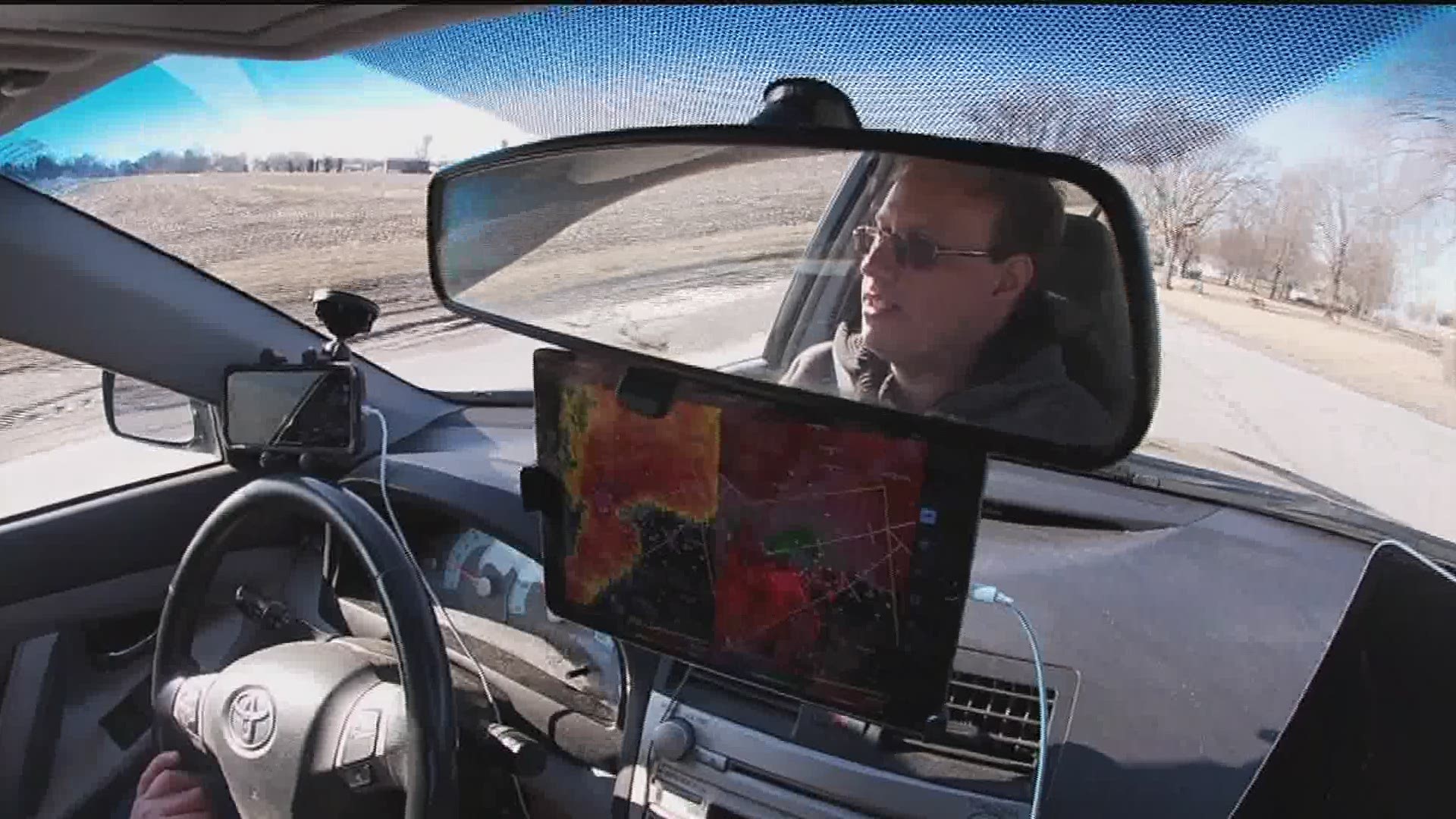WOODHULL, Ill. — When the storm rolls in...
"My hands start to go numb, so I know something is about to happen," storm chaser Cory Marshall said.
Marshall has been chasing storms for six years since the fall of 2014. He turned his fear of storms as a kid into an extreme passion.
He doesn't hide from storms anymore, he chases them.
"We're usually on the south side of any storm we chase," says Marshall. "When I`m out on the road the main thing I look for is the area of rotation 'cause that`s where you`re going to find your tornado."
On chases, Marshall takes his car that may look small but is mighty.
His Toyota Camry is decked out with equipment to help make his chase as smooth as possible. Marshall uses a laptop, iPad, a camera and a video camera regularly on his chases. He also sends images to the National Weather Service so they can see what's going on.
Storm chasers and spotters have a very essential job when it comes to covering severe weather.
While meteorologists are closely monitoring the radar, storm chasers are out in the field watching the storm and sending reports to local meteorologists.
"We need those eyes on the storms," Warning Coordination Meteorologist Rich Kinney said. "Lots of weather enthusiasts come out who have been lifelong weather enthusiasts. They know what they`re doing. They`ve got a lot of experience."
Kinney has over 20 years of experience with the National Weather Service.
Each year, the National Weather Service hosts classes that teach the basics of severe weather, what to look for during storms and how to report information to meteorologists.
The best part?
Anyone can attend these classes! Click here to find a class near you. They run through the first week of April.

